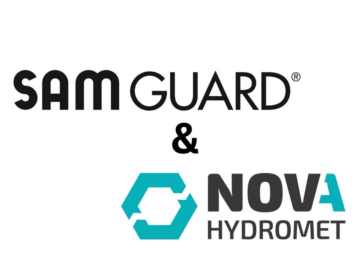December 6, 2023
By: Isabell Bücher
A look back at the changes in process manufacturing in 2023
The major disruptions of the COVID-19 pandemic are behind us, but 2023 was still a year of change for process manufacturing. Technologies are evolving at a rapid pace, and continued fluctuations in the manufacturing markets mean that organizations can’t coast on their previous decisions and investments.
Last year, we predicted that 2023 would bring continued investment in technologies like predictive analytics, AI and automation, IIoT, and smart manufacturing, as well as in supportive capabilities like 5G. We expected that issues like sustainability, supply chain reliability, cybersecurity, and labor shortages would continue to motivate manufacturing decision-making, and forecast the rise of the metaverse.
Many of these expectations proved accurate, although 5G adoption proceeded slower than we predicted, the industrial metaverse evolved more quickly, and we overlooked the impact of micro-factories. In this article, we take a look at the reality that 2023 brought for manufacturing organizations, and how much has changed in the past 12 months.
- IIoT adoption did not falter
Despite consistently high adoption rates of Industrial Internet of Things (IIoT) devices for a number of years, the market has not reached saturation. Manufacturing organizations are still extending their implementations, largely thanks to the enormously broad range of use cases where IIoT is effective. The IDC predicts that by the end of the year, global spending on IoT will reach $805.7 billion, 10.6% higher than in 2022, noting that this rise has been largely driven by discrete and process manufacturing segments which account for over a third of IoT spending.
A study by Ubisense reported that by the end of the year, 62% of manufacturers had integrated IIoT into manufacturing or assembly processes, and 76% intend to continue investing in IIoT technologies. However, the number that have introduced real-time location systems (RTLS), which deliver increased visibility into operations, is slightly lower, showing that there’s still plenty of space for IIoT adoption to continue.
- Plants embraced predictive analytics and AI
2023 saw leaders implement more AI-driven use cases, while laggards strove to catch up. According to a recent Manufacturing Leadership Council report, only 4% of manufacturers have no plans to implement AI, and 57% are still running pilots, although another 29% have established formal plans for adoption. Fully 96% intend to increase or maintain their AI spending.
Plants are using AI-based decision making for everything from production line checks to supply chain management. Advanced analytics that use machine learning (AI) are close to ubiquitous in certain areas, and two-thirds of manufacturers credit AI with generating significant revenue or cost savings.
As a subset of AI, predictive analytics applications such as predictive monitoring and predictive maintenance have helped manufacturers to increase OEE, boost productivity, cut downtime, and generally remove friction from operations. Manufacturers are implementing predictive analytics in many areas, including predictive quality control, supply chain management, and inventory management, helping drive the predictive analytics market at a CAGR of 22.24% to a forecast $2,1601.17 million by 2027.
The year’s big driver of change across industries, generative AI, has yet to have much impact on process manufacturing. So far, use cases mostly center around customer support and sales and marketing, but some organizations are beginning to apply it to optimizing design and development.
- The industrial metaverse has arrived
The “industrial metaverse” refers to the digital existence and operations of a manufacturing plant. It’s a cohesive ecosystem of digital twins, extended reality (XR), IIoT sensors, robotics, and cloud computing and 5G networks, where data, knowledge, processes, and operations flow naturally between the real life equipment and their digital equivalents.
This year, the industrial metaverse took a big step forward to move beyond digital twins to something richer and more complex. Pharma, aerospace, automotive, and energy verticals are leading the way, but Deloitte reports that overall, 92% of manufacturing companies are experimenting with or leveraging at least one use case, while some are running 6 or more.
Manufacturers expect the industrial metaverse to fundamentally transform R&D, design and innovation, and new product strategies, as well as resolving challenges like talent acquisition and retention, supply chain visibility, and resilience. Production, customer interaction, supply chain design, and talent management are all top metaverse use cases. Security and data protection are holding back industrial metaverse adoption, yet almost 40% of organizations intend to significantly increase their use of metaverse technologies.
- Sustainability remains a hot topic
With 2023 bringing another wave of natural disasters triggered by climate change, sustainability has remained at the top of every manufacturer’s list of priorities. The Hartford reports that this year, manufacturing organizations made significant headway towards lowering their environmental impact.
Reducing CO2 emissions and decreasing use of fossil fuels were key tactics this year, alongside sourcing raw materials from more sustainable suppliers. Companies are also investing in sustainable certifications like the LEED certifications and Certified B Corporation status. Net zero emission is an important goal for many manufacturing organizations.
- 5G implementation continues, but could be faster
2023 saw industrial manufacturing plants continue to introduce private 5G networks, although the pace of adoption was not as fast as some expected. A report by Ericsson acknowledges that only 30% of plants have incorporated 5G networks into their infrastructures, and just 8% have plans to do so within the next 12-24 months.
But it observes that manufacturers do understand the value of 5G and are investing in it as part of their digital transformation journey. The study notes that 60% are receptive to the idea, and 16% are running pilots.
- RPA and automation are riding high
Driven by a perfect storm of factors, including labor challenges, softer demand, and improved technologies, 2023 saw great strides in the adoption of robotic process automation (RPA) and autonomous processes, which draw on AI. Manufacturing productivity still hasn’t recovered from the impact of COVID-19, which means plants need to lower costs and maximize operational effectiveness.
Under pressure to cut waste, increase efficiency, and boost productivity with a shrinking workforce, manufacturers see automation as the ideal solution. 40% of those questioned by the NAM’s Manufacturing Leadership Council (MLC) expect that most plants will soon be mainly autonomous, and another 20% think they’ll be fully autonomous.
- Microfactories are on the rise
2023 saw the first flowerings of microfactories continue to bloom and grow. These are small or medium-scale facilities that benefit from automation and advanced analytics to power the production and assembly of complex products. They are easy to set up, forming an important part of a flexible, versatile, and local manufacturing ecosystem.
- The supply chain is still in flux
As we predicted, supply chain challenges continued into 2023, with the NAM’s Manufacturing Leadership Council reporting that 90% of participants in a recent survey experienced either significant or partial disruption in the past two years, and 73% saying they don’t believe their supply chains are fully protected. Not surprisingly, this has led to ongoing reassessments and readjustments to make supply chains more resilient and robust.
Lingering supply chain concerns have been exacerbated by the US’s trade war with China, Russia’s invasion of Ukraine, and other geopolitical tensions. The BCG notes that many manufacturing organizations have shifted their sources of raw materials and component parts, with reshoring, near-shoring, and ally-shoring appearing as important trends.
- Smart factories are skyrocketing
Smart manufacturing, driven by the integration of the previously separate spheres of IT and OT (operations technology), has grown by leaps and bounds this year, especially in the industries of pharma, electronics, automotive, and aerospace engineering. Overall, the global smart manufacturing market is forecast to grow at a CAGR of 17.2% between 2023 and2028, from $108.9 billion this year to $241 billion by 2028.
F&B companies are also embracing smart factory technologies, with 49% having already adopted a smart manufacturing platform and another 45% having established plans to implement it in the coming year. Most are using it to keep up with market transformations and drive their deployment and integration of other new technologies. Smart factories are helping fuel the aforementioned rise in microfactories, since they see the greatest benefits from the streamlined automation and efficiency the tech can deliver.
- Cybersecurity is still a concern
Manufacturers continued to worry about cybersecurity throughout 2023. Data from IBM Security’s 2023 X-Force Threat Intelligence Index showing that manufacturing was the most-targeted sector for ransomware attacks helped drive this trend. Downtime as a result of cyber attacks ranged from several hours to 76 days, and no factories can afford that kind of loss. All of this helped further the need for robust cybersecurity protections and comprehensive data defense.
- Labor issues fueled a rise in DEI
The ongoing labor crisis in the manufacturing industry, together with increasing focus on DEI among top talent, pushed more manufacturing companies to prioritize DEI initiatives in 2023. According to Deloitte, 83% of manufacturers reported difficulties attracting and retaining quality talent, with 45% saying that labor issues forced them to turn down business opportunities and 70% that production timelines suffered as a result.
Manufacturing is still highly dominated by white males. Only 26% of employees are female and 13% belong to an ethnic minority group, but changing these figures could be part of the solution to the workforce issue. Deloitte adds that 63% of manufacturers see improved DEI as enhancing their ability to attract, retain, and develop talent. In response, manufacturing companies are implementing inclusive hiring practices, revising work cultures to be more inclusive, and striving to ensure equal opportunities for career growth.
Other tactics that have been implemented to resolve hiring issues this year include wage increases, and upskilling initiatives for the current workforce.
2023 was a year of continued change
Given all the unrest and uncertainties abounding in the geopolitical and social realm, it’s not surprising that the manufacturing industry also experienced massive changes. There’s every chance that 2024 will continue to drive these developments, but as technology and social movements adapt rapidly, it’s impossible to predict what the next 12 months could bring.





